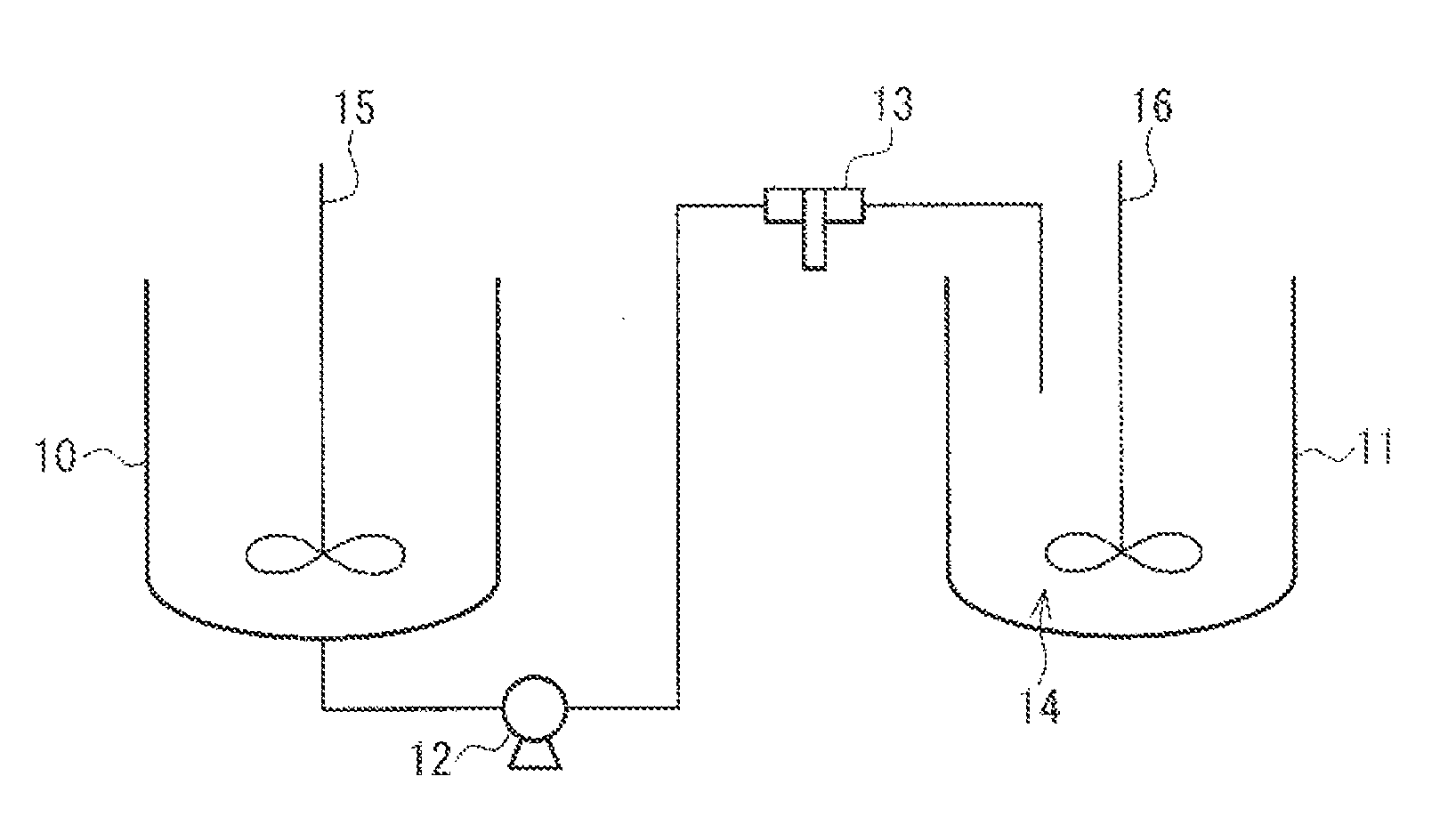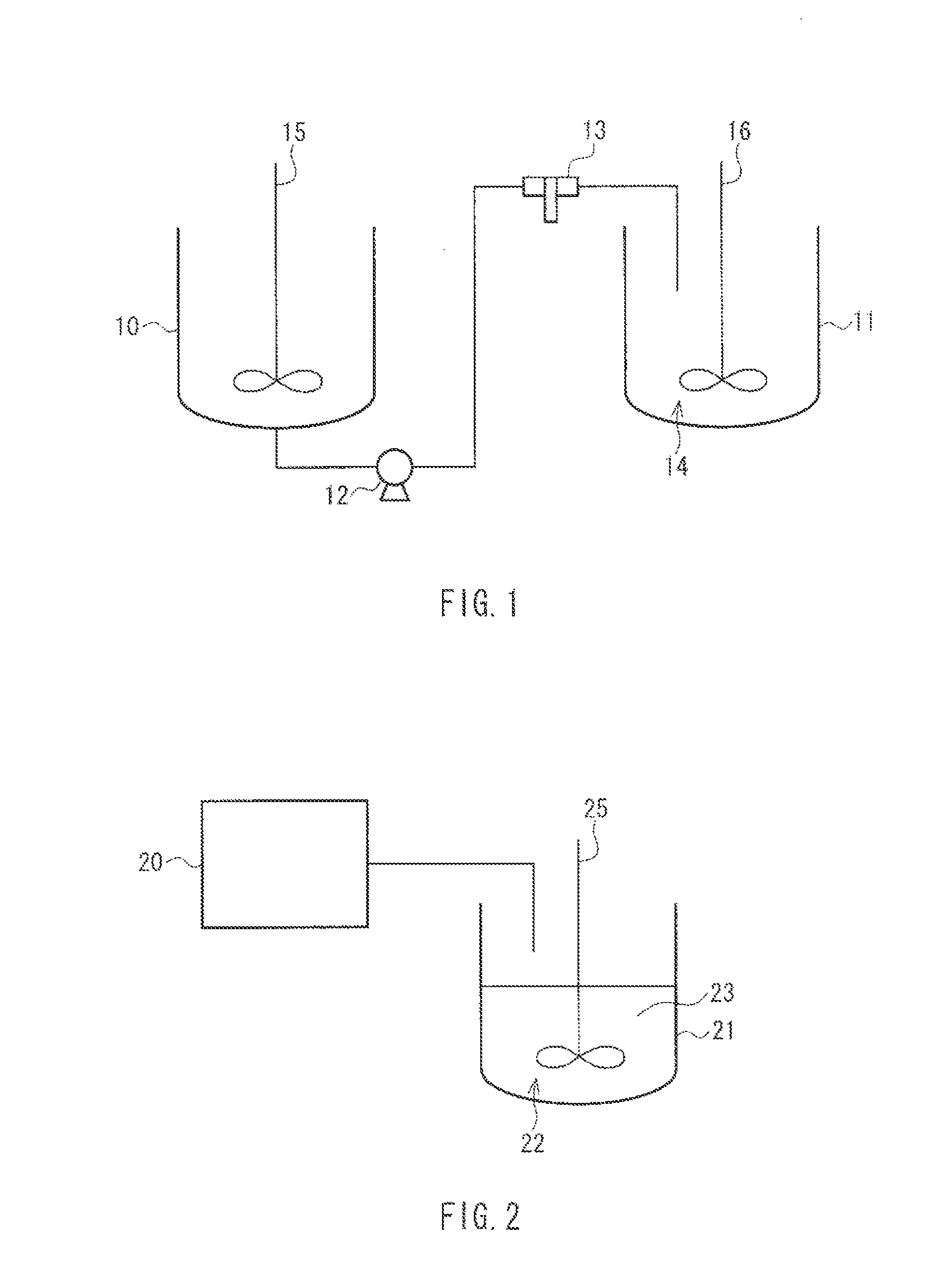Vinyl chloride resin aggregate particles, process for producing same, and glove obtained using same
a technology of vinyl chloride and resin aggregate, which is applied in the direction of natural mineral layered products, cellulosic plastic layered products, transportation and packaging, etc., can solve the problems of affecting the use of the user, affecting the use of the glove, and the product function of the product, so as to achieve favorable sagging and non-infiltrating properties
- Summary
- Abstract
- Description
- Claims
- Application Information
AI Technical Summary
Benefits of technology
Problems solved by technology
Method used
Image
Examples
manufacture example 1
[0084]Into a 300 L jacketed pressure-resistant vessel, 110 kg of vinyl chloride monomer, 110 kg of ion-exchange water, 40 g of ammonium persulfate and 0.3 g of copper (II) sulfate pentahydrate (catalyst for redox reaction) were charged and warmed to 50° C., to which 9 kg of 1% sodium sulfite aqueous solution and 7 kg of 10% ammonium myristate aqueous solution were added continuously while stirring so as to be polymerized. After performing polymerization until the polymerization pressure was lowered by 0.15 MPa from the initial pressure (0.7 MPa), the residual monomer was recovered to obtain vinyl chloride-based resin latex. The polymerization invert ratio of the finally-obtained vinyl chloride-based resin latex with respect to the total amount of the initially-charged monomer and the added monomer (hereinafter described as the whole monomer amount) was 90%. In the obtained vinyl chloride-based resin latex, the mean volume particle diameter of the vinyl chloride-based resin was 0.3 μ...
manufacture example 2
[0085]A vinyl chloride-based resin latex was obtained similarly to Manufacture example 1 except that the charged monomer substance was a mixture of 104.5 kg of vinyl chloride monomer and 5.5 kg of vinyl acetate monomer. In the obtained vinyl chloride-based resin latex, the mean volume particle diameter was 0.3 μm. The concentration of the polymer solid in the vinyl chloride-based resin latex was 46%. The glass transition temperature of the vinyl chloride-based resin measured in the above-mentioned manner was about 78° C.
manufacture example 3
[0086]A vinyl chloride-based resin latex was obtained similarly to Manufacture example 1 except that the charged monomer substance was a mixture of 99 kg of vinyl chloride monomer and 11 kg of vinyl acetate monomer. In the obtained vinyl chloride-based resin latex, the mean volume particle diameter was 0.3 μm. The concentration of the polymer solid in the vinyl chloride-based resin latex was 46%. The glass transition temperature of the vinyl chloride-based resin measured in the above-mentioned manner was about 76° C.
PUM
| Property | Measurement | Unit |
|---|---|---|
| particle diameter | aaaaa | aaaaa |
| temperature | aaaaa | aaaaa |
| temperature | aaaaa | aaaaa |
Abstract
Description
Claims
Application Information
 Login to View More
Login to View More - R&D
- Intellectual Property
- Life Sciences
- Materials
- Tech Scout
- Unparalleled Data Quality
- Higher Quality Content
- 60% Fewer Hallucinations
Browse by: Latest US Patents, China's latest patents, Technical Efficacy Thesaurus, Application Domain, Technology Topic, Popular Technical Reports.
© 2025 PatSnap. All rights reserved.Legal|Privacy policy|Modern Slavery Act Transparency Statement|Sitemap|About US| Contact US: help@patsnap.com


